The role of Manganese in water splitting and photosynthesis
Manganese (Mn) is an essential micronutrient that while needed in small amounts, plays a key role in photosynthesis. Mn sparks the photosynthesis process by splitting water after Photosytem II (PSII) fixes light to initiate the conversion of CO2 and water into carbohydrates.
Manganese deficiency is widespread in Canadian Prairies and Eastern Canada, reducing growth and development of many crops and restricting yields and quality. In this post we will specifically examine the role of manganese in plants, the consequences if its deficiency and provide solutions to mitigate the crop stress due to manganese shortage or deficiency.
Along with photosynthesis, manganese is also involved in many processes of plant growth and development including chlorophyll production, metabolizing nitrogen and carbohydrates, and various oxido-reduction reactions that lead to enzymatic activities.
Photosynthesis: A light reaction that sets plants apart
Photosynthesis is a light-dependent process in which pigment molecules (chlorophyll) absorb energy from sunlight. The very first step of this reaction starts with a light photon striking the Photosystem II (PSII) to initiate photosynthesis. This absorption of light energy helps split water molecules into hydrogen and oxygen, generating free electrons.
Each splitting of a water molecule releases a pair of electrons that form the electron transport chain and initiate the pumping of hydrogen molecules into the inner part of the chloroplast called thylakoid.
This becomes an electrochemical gradient in which ions move through two sets of enzymes called NADP Reductase and ATP synthase that are responsible for generating energy molecules (Adenosine Tri Phosphate aka ATP) and reducing power (NADPH). The result of this leads to the formation of sugars in the outer part of the chloroplast during the Calvin cycle.
Mn is called the element of life for this function because without water splitting, the chain reaction that leads to fixing CO2 and water to convert it to carbohydrate would be broken. See Figures 1 and 2 below for more details on a plant’s internal reactions during photosynthesis.
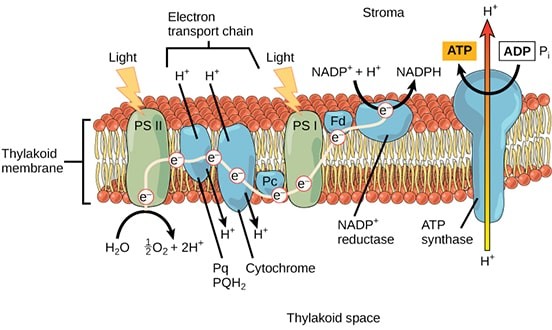
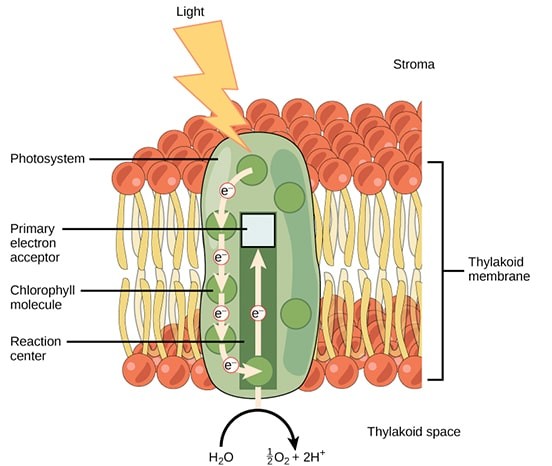
For more information, watch the narrated Youtube video:
Manganese is the 10th most abundant element in the soil. Its average concentration is about 650 ppm. Mn undergoes oxido-reduction easily in the soil, its chemistry is complex and not yet fully understood, although three oxidation states are known: Mn2+, Mn3+, Mn4+. The reduced state Mn2+ is the preferred form for plant and microbial uptake and internal transport.
Symptoms and effects of manganese deficiency
Mn deficiency is a plant disorder that is often confused with, and often occurs in conjunction with, iron deficiency. It can occur in a wide variety of soil conditions including weathered soils, soils formed of parent material deficient in Mn, soils with high pH, sandy soils, heavy manured or limed land, excessive use of N or P and peat or mucky soils with high organic matter content.
Typical symptoms of Mn deficiency show as paleness in the younger growth and upper leaves. When it persists, the appearance of blackish/brown spots along the veins become visible and it’s more noticeable on the lower side of the leaves. If not corrected on time, the irregular, grayish-brown lesions coalesce leading to a collapse of the leaf (i.e., Gray Speck Symptoms).
As Mn is relatively immobile in plants, deficiency symptoms first develop on the growing points and the leaves. The common symptoms are interveinal chlorosis or yellowing, first developing on the leaf edges.
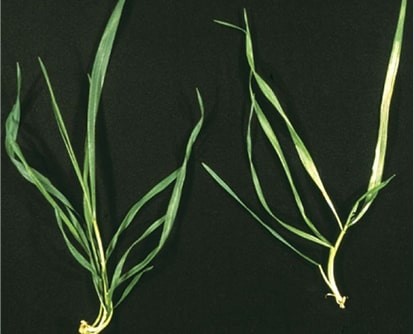
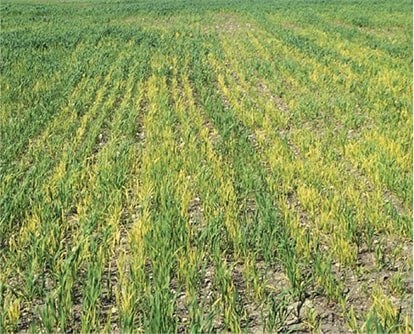
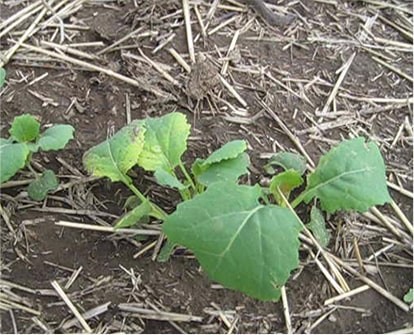
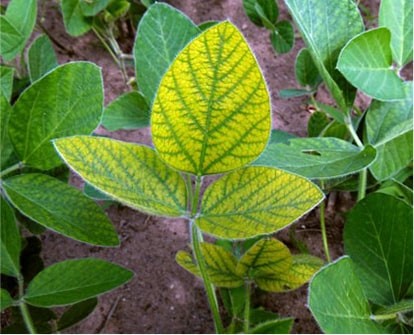
If Mn deficiency is not prevented, detected early and corrected, serious symptoms can occur in crops, including a drop in photosynthesis, which affects many processes of growth and development including grain fill and quality; lodging as Mn is involved in lignin biosynthesis and a lack of triggered immunity, which help the plant defend themselves against pathogens and pests (see our next blog).
Solutions for Manganese deficiency.
Soil tests at regular intervals are typically a good way of detecting and tracking soil conditions that may produce Mn deficiency in the crop. In season, one should conduct tissue or SAP testing to assess the level of Mn in planta. In addition, the application of certain herbicides in season tend to exacerbate the expression of Mn deficiency symptoms (i.e., Canola, Corn, Soybeans).
OMEX offers a wide range of Primers, Starters, Foliars, PGRs, Biologicals and Biostimulants to help optimize growth and development of crops in ideal and less-than-ideal conditions that are able to prevent or correct many deficiencies, including Mn deficiency. Primers (Primer Mn, Pulse Pak) and Starters supplemented with Mn (OMEX Mn) set the stage for the seedlings to tap into the banded soil fertilizer and create a habitat for beneficial microbes to be able to mineralize nutrients and symbiotically interact with the crop. If dry fertilizer is the only source of input, the use of Perfuze (Perfuze Mn, Perfuze ZnBMn) to coat the dry blend helps even the distributions of micronutrients especially Mn in the field.
In-Season Solutions
In season, the application of certain pesticides creates temporary shortage of Mn available to the younger growth, exacerbating the symptoms of Mn deficiency. Foliars, especially the ones formulated with Stress Reliever Technology (i.e., C3, P3, Nutriboost) help mitigate the early season stress that could trigger Mn deficiency.
The addition of products like OMEX Mn to these stress relivers can aid in correcting severe Mn deficiency. In crops requiring two applications of herbicides (i.e., Canola, Corn, Soybeans) the Mn shortage is more pronounced during the second pass. Products such as Super Mn(+) have been formulated to tank-mix with the pesticides to mitigate Mn deficiency without interfering with weed control.
If the deficiency is mild or the trigger conditions for deficiency are low, products such as uPtaKe IC are highly recommended to supplement essential nutrients, including Mn, and correct or prevent Mn deficiency. In cereal crops prone to lodging the application of Mn-containing products such as Fortis proved to trigger the accumulation of lignin and prevent the crop from falling over (see our previous blog on crop lodging).
Talk to your local Ag Retailer or get in touch with your OMEX representative to learn more about OMEX products and how they can help you prevent or correct deficiencies, including Mn, and preserve yield and quality of your crops.
